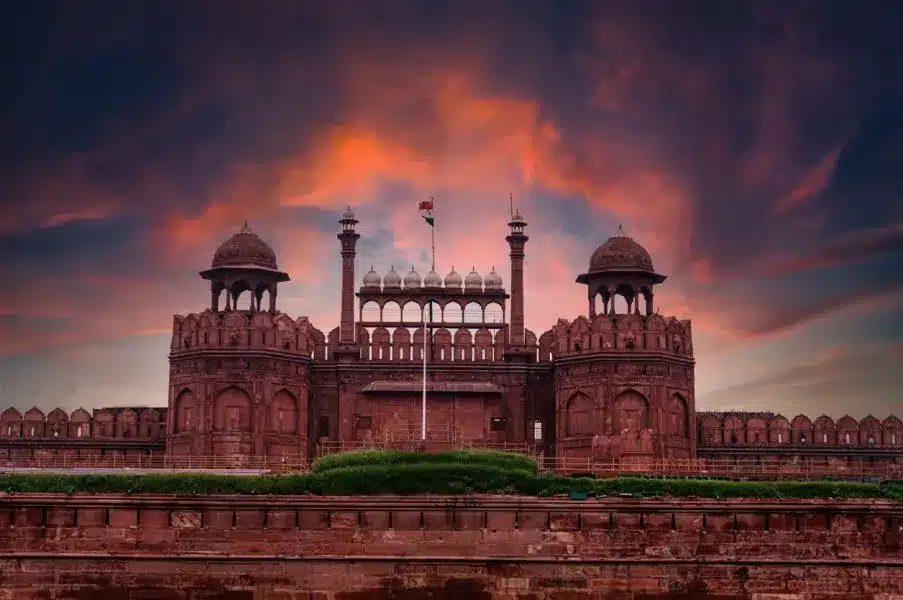About Monuments of National Importance (MNI)
- The Ancient Monuments and Archaeological Sites and Remains Act (AMASR Act), 1958 (amended in 2010), provides for the declaration and conservation of ancient and historical monuments, and archaeological sites, and remains of national importance.
- Presently, there are 3,693 MNI in India. Uttar Pradesh (745 monuments/sites) have the highest number.
- Declaration:
- The Central Government issues a notification of its intention to declare any ancient monument which archaeologically, historically, or architecturally qualifies to be of national importance by giving two months’ notice, inviting views/objections from the public.
- After considering the views/objections received within the stipulated period, the Central Government may declare the ancient monument to be of national importance by publishing a notification in the official gazette.
- Once a monument or a site is declared to be MNI, their protection and upkeep is the responsibility of the Archaeological Survey of India, under the Ministry of Culture.
- ASI undertakes the conservation, preservation, and maintenance of MNI throughout the country.
- The One-hundred-meter radius of the monument is then considered a ‘prohibited area’ where there is a ban on construction activities. Further 200 meters (i.e., 100+200 meters) are considered a ‘regulated area’ where there are regulations on construction.
- The ASI also has the power to delist monuments it deems to “have ceased to be of national importance” under Section 35 of the Act. Once a monument is delisted, the ASI becomes no longer responsible for protecting these monuments.
Q1) What is the Archaeological Survey of India (ASI)?
ASI, under the Ministry of Culture, Govt of India is the premier organization for the archaeological research and protection of the cultural heritage of the nation. Maintenance of ancient monuments and archaeological sites and remains of national importance is the prime concern of the ASI. Besides, it regulates all archaeological activities in the country as per the provisions of the Ancient Monuments and Archaeological Sites and Remains Act, 1958. It also regulates the Antiquities and Art Treasure Act, 1972.
Source: Why Centre won’t ‘protect’ these 18 ‘lost’ monuments
Last updated on December, 2025
→ Check out the latest UPSC Syllabus 2026 here.
→ Join Vajiram & Ravi’s Interview Guidance Programme for expert help to crack your final UPSC stage.
→ UPSC Mains Result 2025 is now out.
→ UPSC Notification 2026 is scheduled to be released on January 14, 2026.
→ UPSC Calendar 2026 is released on 15th May, 2025.
→ The UPSC Vacancy 2025 were released 1129, out of which 979 were for UPSC CSE and remaining 150 are for UPSC IFoS.
→ UPSC Prelims 2026 will be conducted on 24th May, 2026 & UPSC Mains 2026 will be conducted on 21st August 2026.
→ The UPSC Selection Process is of 3 stages-Prelims, Mains and Interview.
→ UPSC Result 2024 is released with latest UPSC Marksheet 2024. Check Now!
→ UPSC Prelims Result 2025 is out now for the CSE held on 25 May 2025.
→ UPSC Toppers List 2024 is released now. Shakti Dubey is UPSC AIR 1 2024 Topper.
→ UPSC Prelims Question Paper 2025 and Unofficial Prelims Answer Key 2025 are available now.
→ UPSC Mains Question Paper 2025 is out for Essay, GS 1, 2, 3 & GS 4.
→ UPSC Mains Indian Language Question Paper 2025 is now out.
→ UPSC Mains Optional Question Paper 2025 is now out.
→ Also check Best IAS Coaching in Delhi

















